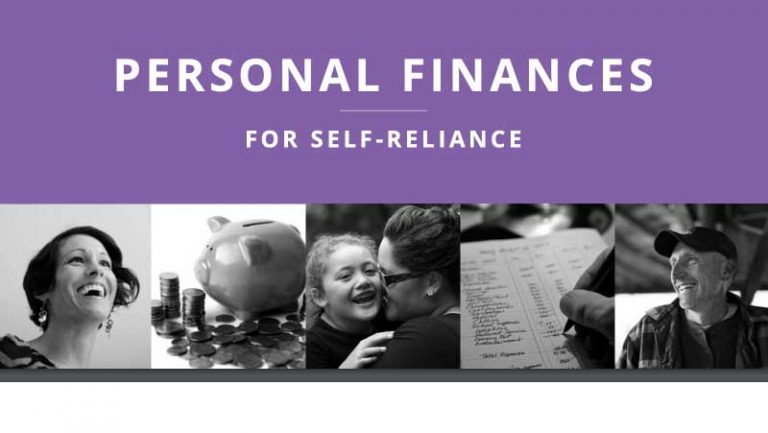How to Prevent Homosexuality and Gender Confusion in Children
The erosion of morality and traditional values – especially over the several decades since the sexual revolution of the 1960s – has created a culture in modern society that is confusing in too many ways. Random public shootings, depression, anxiety, suicide, a general lack of honesty and integrity, and a host of other societal breakdowns that are characteristic of a very dysfunctional civilization can be traced to one thing: a breakdown of the traditional family. The deliberate societal transition throughout much of the world from a stable married mother and father who are loyal to each other has become a seriously dangerous experiment. We are now very much reaping what has been sown over the past generation or two, and it’s not too pretty.
How can parents break the vicious cycle that is now accelerating almost out of control?
Recently while I was watching my kids perform music in Nashville, I met a man who asked me soon after I began chatting with him whether I and my family are members of his church, The Church of Jesus Christ of Latter-day Saints (aka LDS Church or Mormon Church). I told him that we were indeed “Mormons”, and the ensuing discussion reminded me of some of the research I’ve done over the years as a parent trying to be vigilant to protect his kids from what is being force fed to their generation through television, the internet, social media, the school system, and in pretty much every facet of society.
This man acted very feminine, and I could tell almost immediately that he identified as being gay. He told me that he hadn’t been active in the LDS Church for several years, but that he’s planning to return once the church publicly recognizes (paraphrasing his words) that homosexuality isn’t wrong and accepts gay people as being no different from those who are straight. Like many people in this age of gender and sexual confusion, this man was obviously straddling two worlds. One (his spiritual or church side) was a part of him that he was very fond of, and that he wished could be more a part of his life because of the comfort, purpose, and understanding that it brings, except that the other world (the one in which he for now seems to have resigned himself) is so loud, so in-your-face, and so persistent in making sure that he is “empowered” to be what he wants, to choose his own path, to not be judged, to be free from antiquated notions of morality, etc., etc. etc., that it’s obviously made him miserable, let alone conflicted.
As this man told me his story, I could see how the seeds of homosexuality were planted in his youth, and he never recovered. His told me that his father was an evil man (providing several illustrations that backed up his perspective), and that they always had a hostile relationship. Couple that situation with some genetic predisposition and a society that applauds alternative lifestyles, and it’s no wonder this man is visibly confused about who he should be.
Emotionally Absent Fathers And Homosexuality
Because homosexuality has become so much of a political topic, and because the relentless cultural boundary-pushers have at last achieved much of their desired outcome, using mostly deceit and intimidation (Alfred Kinsey, the father of the modern homosexuality acceptance movement, was himself a fraud), where it’s politically incorrect to talk about homosexuality in anything but a complimentary tone, most of society is afraid to discuss what human failings cause homosexuality. Despite all that, there is clear evidence that there are indeed clear nurture-related causes for homosexual tendencies.
Many studies point to a high correlation between men who have emotionally absent fathers and a tendency toward homosexuality. There is ample evidence that a lack of gender role models causes same-sex tendencies. As marriage loses its place as a pillar institution of societies throughout the world, this trend becomes a downward spiral.
A Parent’s Guide: How to Avoid Gender Confusion

Several years ago while attending a parent meeting at my kids’ school, there was an purposely long discussion about the dangers of the increasing lack of religiosity in the United States, combined with suggestions on what to do to protect our own children collateral damage.
The reading of a pamphlet, A Parent’s Guide, (published in 1985 by the LDS Church) was strongly suggested as a guide for how to convey moral standards to the students, our respective children, especially as they relate to “intimacy”, which is the reverent way to refer to sexual relationships and activity.
I followed the suggestion, and I found the detail with which the suggestions addressed the problems of our era, including homosexuality, to be surprisingly direct.
Two of the chapters in that pamphlet have section headings that explicitly address gender confusion as a problem facing children as they grow up in a confused world.
Chapter Three of A Parent’s Guide, Teaching Infants and Toddlers: from Birth to Approximately Three Years, includes a section titled, “Help Children Understand and Accept Their Gender“. The instruction contained there explain how to help kids, beginning at birth, to be comfortable about their specific gender, something that is certainly not fluid.
From the very beginning, the child’s life is influenced by gender as he or she learns the central role of being a male or female person. Children learn various roles associated with being male or female. Though these roles are eternally significant, it is a fairly simple task to learn them unless we are harmed. A child needs to understand that he or she is acceptable as a boy or as a girl. Therefore, there is a crucial distinction to be made between being male or female and feeling good about gender.
You have the power and the responsibility to convey acceptance to the child regardless of its gender. When you treat a son or daughter warmly and approvingly, that child will increase in self-esteem as he or she increasingly enjoys being a boy or girl. This occurs naturally if there is acceptance and love within the home.
When I hear arguments from the “born that way” side of the debate, I always find myself asking, “Does a newborn child exhibit any sexual preferences towards anything?” If so, I’ve never seen it, and I have seven kids of my own.
I’ve had people respond to my question by saying, “Well, ever since he was four he didn’t act much like a boy normally does.”
I wonder about the rationale of a person who thinks that there is nothing significant during the first one, two, even three years of a child’s life. I have a four-month-old son whose eyes follow me as I walk across the room, and who more often than not pleads with me using his eyes and the best form of communication he has right now to pick him up and hold him, which I normally do.
The point here is this: kids are learning, including principles of right from wrong and their gender identities from day 1.
Chapter Four of A Parent’s Guide, titled “Teaching Children: from Four to Eleven Years” has a section labeled, “Teach Children to Accept and Understand Their Gender Roles“. Quoting from that section…
From ages four to eleven, each child is learning how to be male or female and about what being male or female means about their relationships with others. Toys, games, books, and friends revolve largely around gender. Considerable controversy has been aroused of late around such terms as sexism, feminism, and machismo, as if there is something wrong with being too male, too female, or too virtuous. President Spencer W. Kimball said, “I sincerely hope that our Latter-day Saint girls and women, and men and boys, will drink deeply of the water of life and conform their lives to the beautiful and comprehensive roles the Lord assigned to them” For Latter-day Saints, the matter of virtuous role behavior ought not to be confusing.
…members of the Church must not be deceived about one immutable truth: there is eternal significance in being a man or a woman…
…within that same gospel framework are some realities about differences between the two genders. This means that there are some exclusive things men are to do and some that women are to do. A most appropriate time for this development is the interlude between early childhood and adolescence.
Naturally, the next chapter deals with teaching adolescents, ages 12 through 18. There is no complete section here devoted to helping kids understand their gender or gender roles, something that should have taken place before they hit puberty around age 12. Instead, the instruction is more advanced, taking on subjects like the importance of sexual purity and discipline. The guide also takes a 180-degree opposite approach to masturbation from almost any other giver of advice: don’t do it.
For teaching adolescents about sexuality, here are some of the key pieces of from the guide…
Sex Drive
The so-called sex drive in humans is not entirely the chemical or instinctive compulsion to mate that it is in animals. Rather, from the time we are born, we each need to be physically and socially nurtured. The changes of puberty permit us to experience remarkably heightened pleasures of touch and arousal. But we have the agency to control the emotions and behaviors leading up to intentional sexual arousal. We can control when, where, how, and with whom we express our sexuality.
Masturbation
The sin of masturbation occurs when a person stimulates his or her own sex organs for the purpose of sexual arousal. It is a perversion of the body’s passions. When we pervert these passions and intentionally use them for selfish, immoral purposes, we become carnal.
Masturbation is not physically necessary. There is already a way by which the male system relieves excessive spermatic fluid quite regularly through the nocturnal emission or wet dream. Monthly menstrual flow expels the female’s egg and cleanses the womb. For both sexes, physical or emotional tensions can be released by vigorous activity. Thus, in a biological sense, masturbation for either gender is not necessary. In a gospel sense, it is a sin.
My Take On A Parent’s Guide`
When I read A Parent’s Guide, I was blown away with how practical and detailed it is about how to teach children about intimacy in a way that can shield them from the influences of our contemporary culture.
For those who haven’t bought into the wholesale acceptance of homosexuality as simply an “alternative lifestyle”, and who recognize it , it’s helpful to have guidelines and instructions like this to arm yourself.
I hope you find this information beneficial in your approach to raising your own kids.







